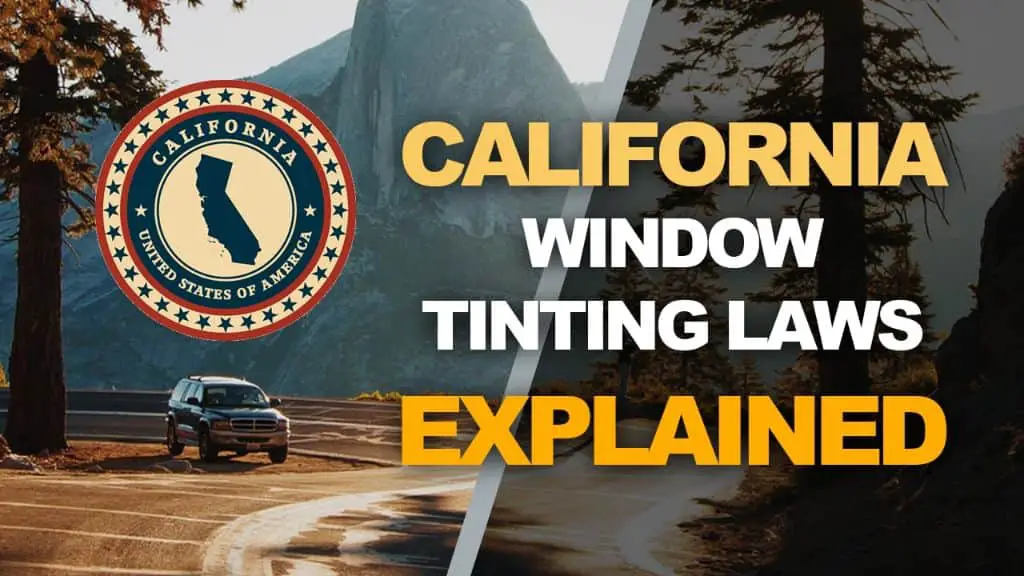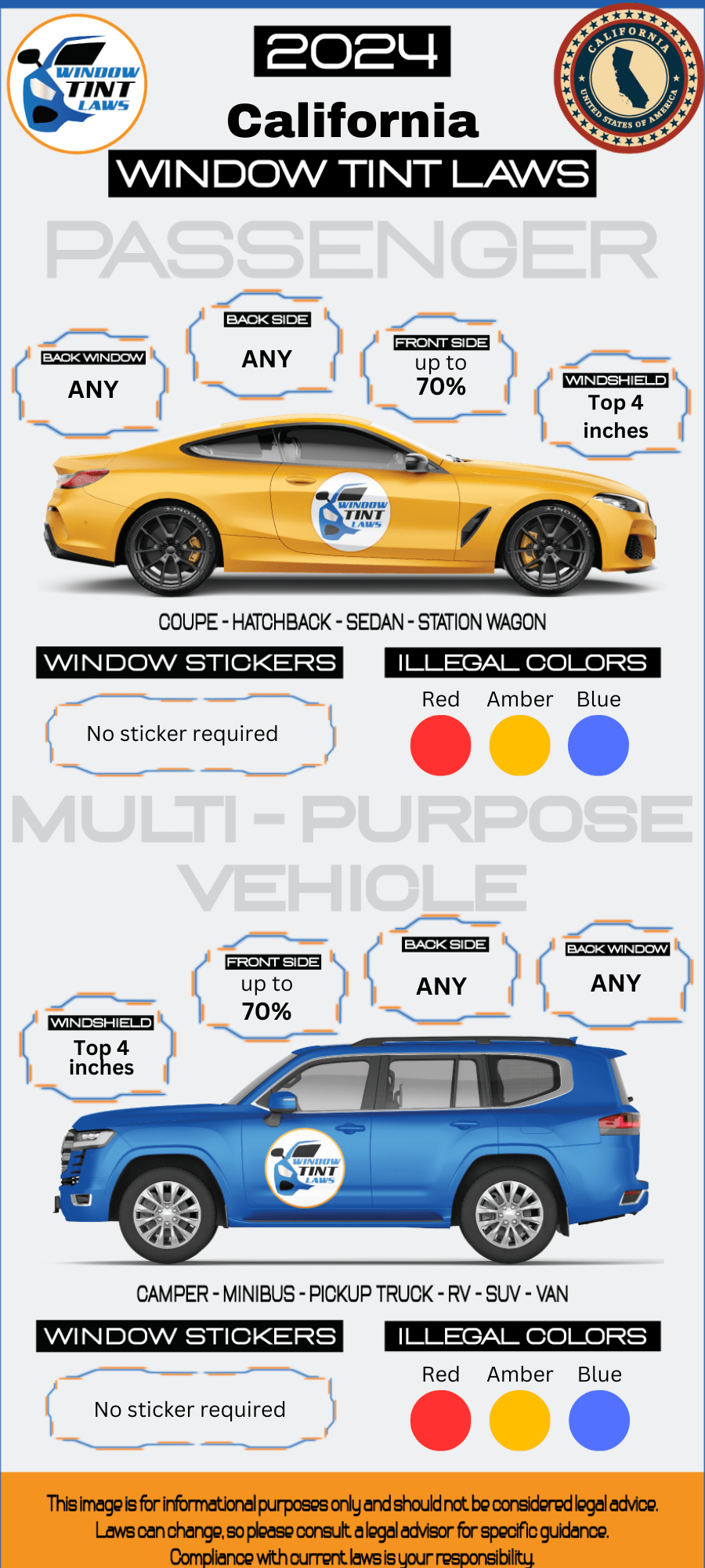
California Tint Laws – 2024 Updated Legal Tint Limit
Please note that California Legal Tint Regulations can change daily and may be interpreted differently at the city or county level. We recommend verifying this information with your local DMV or law enforcement agencies. We have manually fact-checked this content using official state resources. California enacted tinting laws in 1999. If any information provided is incorrect or outdated, please contact us so we can make the necessary corrections. Thank you.
2024 California Tint Laws – Legal Tint Limit For Passenger Vehicles
- Front Windshield: Cannot have any tint that blocks light transmission. Only the top 4 inches can be tinted.
- Front-side windows must allow over 70% of light to be transmitted. This restricts tint to 30% or lighter.
- Back-side windows : Any tint darkness can be used
- The rear windshield : Any tint darkness can be used
2024 California Tint Laws – Legal Tint Limit For Multi-Purpose Vehicles
- Front Windshield: Non-reflective tint is allowed on the top 4 inches of the windshield.
- Front seat side windows: up to 88% tint darkness allowed with aftermarket film – up to 70% tint darkness allowed if combined with factory-tinted windows.
- Back seat side windows: Any tint darkness can be used
- Rear window: Any tint darkness can be used

- Medical exemptions allow darker tints on front side windows with a doctor’s note.
- Reflective tints that mirror or glitter are not permitted on any windows.
- Violating these restrictions can result in a fix-it ticket, with fines starting at $25 per window for a first offense.
- Local regulations may further restrict the state of California legal tint limit, so some California cities or counties may have additional limitations.
What does VLT Mean according to California Tint Laws?
- Window tint film’s light transmission is measured as VLT (Visible Light Transmission) and each state has its own legal limits for VLT on car windows.
- A HIGHER VLT means that more light is allowed to pass through the window tint film.
- Example: a 75% tint will allow 75% of the light to pass through whereas a 5% tint will only allow 5% of the light to pass through, making the 5% tint a much darker film.
- California’s window tint law has specific VLT limits for Passenger Vehicles and Multi-Purpose Vehicles.
FAQ’s Regarding California Tint Laws and California Legal Tint Limit
Do I have to have side mirrors in California?
California Tint Laws require Dual side mirrors on your car if the rear window is tinted.
Is colored tint illegal in California?
To have California legal tint you are not allowed to have Red, Amber, or Blue tint. You are also not legally allowed to have any colored tint on your side windows.
Do I need a certified sticker from the company installing my window tint in California?
No sticker to identify legal tinting is required by the California Tint laws.
Are there Medical Exemptions in California for Window Tint?
California tint laws have allowed medical exemptions for lower tints on all windows since September 2017.
What is the California darkest legal tint allowed?
Technically, in California, the law permits a tint darkness of 0% on the rear side windows and the back window, which is the darkest level allowed.
How do I get a Tint Exemption in California?
California State Law allows window tint medical exemptions to be given to vehicle owners. To file for a medical exemption in California you will need a letter stating the medical necessity for darker window tints that is signed by a licensed physician. If your physician determines it is in your best interest to be exempt from California Window Tint Laws for diseases and disorders, you can file an exemption.
You are required to carry the physical medical exemption certification with you at all times in your vehicle if you have window tint installed on the side windows in the front seat or on the windshield.
It is also stated in the law that the window tint installed according to these medical exemptions shall not be used during darkness. This seems to imply that your car may be rendered useless or at least illegal to drive at night. Only clear, colorless, and transparent film may be applied to your windshield and front windows according to the California window tint medical exemption rules. If an alternative type of window tint film is found to have been applied to the vehicle, authorities may require you to remove the tint.
For more information regarding window tint medical exemptions in California you can check out this resource:
Best Window Tint Companies in California
- Best Car Window Tinting in Los Angeles California
- Best Car Window Tinting in San Diego California
- Best Car Window Tinting in San Jose California
- Best Car Window Tinting in San Francisco California
- Best Car Window Tinting in Fresno California
- Best Car Window Tinting in Sacramento California
- Best Car Window Tinting in Long Beach California
- Best Car Window Tinting in Oakland California
- Best Car Window Tinting in Bakersfield California
- Best Car Window Tinting in Anaheim California
